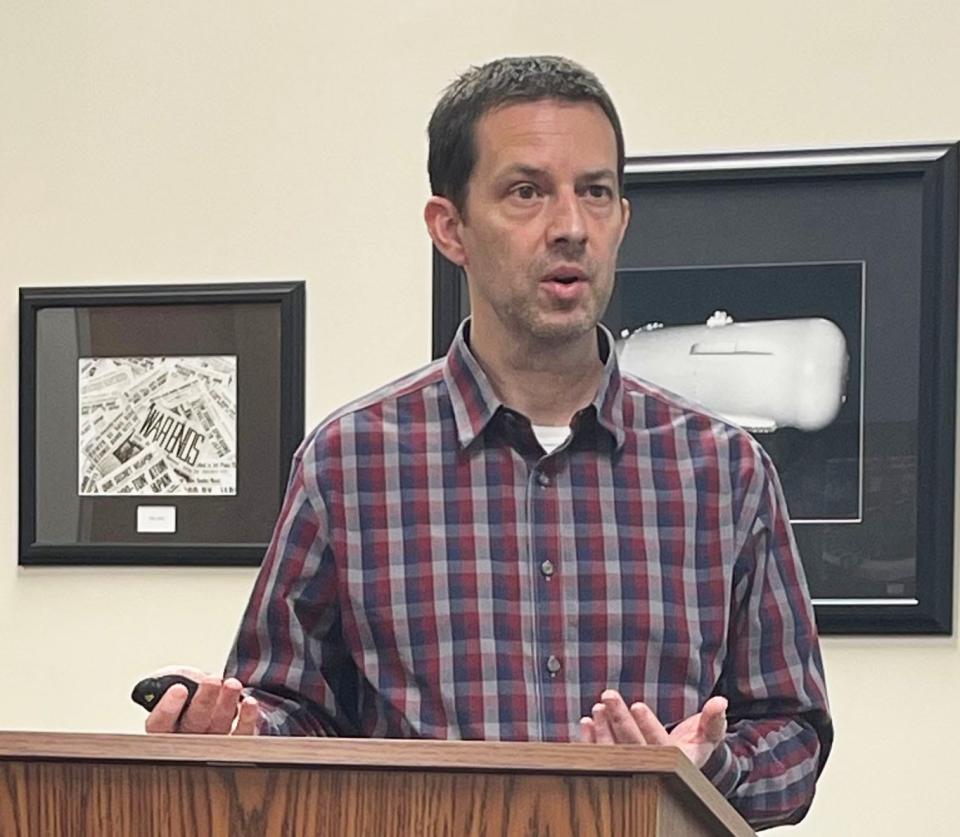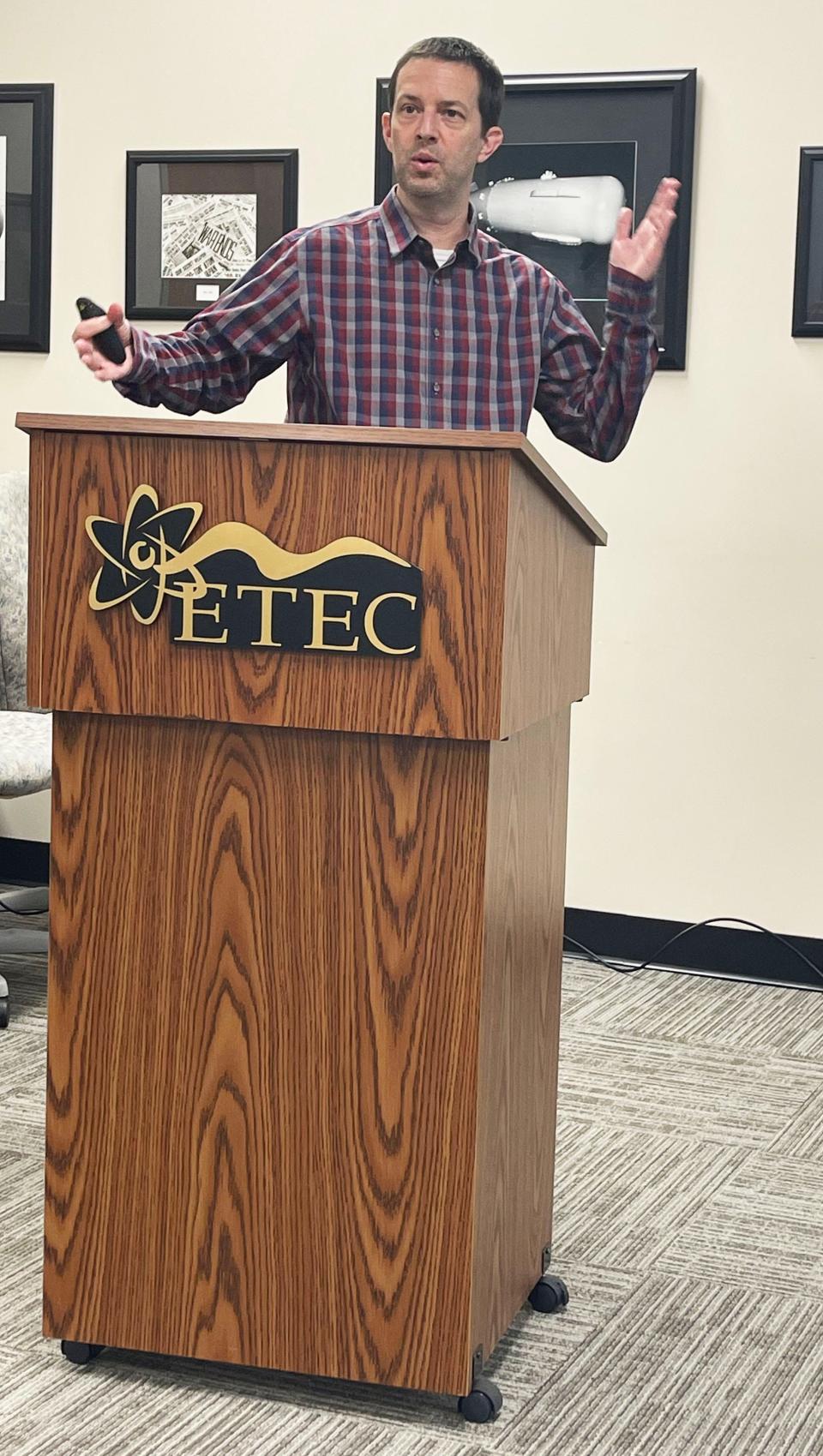How ORNL researchers aid in the discovery of new drugs
For those who have been infected by the SARS-CoV-2 virus, Paxlovid has generally been an effective drug. It has kept many people afflicted with COVID-19 out of the hospital. It has enabled many of them to return to a normal life after five or more days.
“My mom took it, and it really made a big difference,” Jerry Parks, a computational chemist at Oak Ridge National Laboratory said during a recent talk to Friends of ORNL. He described a multi-institutional effort he led to design an alternative drug to stop the novel coronavirus from not only reproducing itself, but also harming the human immune system.

“If Pfizer’s Paxlovid is already available, why do we need another anti-COVID drug?” asked Parks, leader of the Molecular Biophysics Group in the Biosciences Division at ORNL.
He gave several reasons. Paxlovid can cause side effects, such as nausea and a metallic taste in the mouth while being taken for five days. It is advised not to take it with commonly used drugs such as statins.
“Proteins mutate, so the virus could develop drug resistance, potentially making drugs less effective over time,” he said. Also, he added, Paxlovid attacks only one coronavirus enzyme so it might be advantageous to develop drugs that target other viral enzymes.
Parks explained that certain genes in the coronavirus genome are responsible for producing two enzymes inside the virus called proteases – the main protease and the papain-like protease (PLpro). Both proteases of the coronavirus, he added, cut proteins at specific sites, enabling the formation of new proteins that benefit the virus.
Paxlovid consists of two drug molecules. One is nirmatrelvir, which binds to and inhibits the main protease of the coronavirus, preventing the virus from reproducing. The second is ritonavir, which boosts nirmatrelvir levels by keeping the human liver from breaking it down too quickly.
Working with researchers from ORNL and five other U.S. Department of Energy national laboratories, four universities and a private company, Parks led an effort to design a drug that inhibits the other protein-chopping protease of the coronavirus – the papain-like protease (PLpro).
“The main protease cuts these long chains of amino acids at more sites than PLpro does,” he said. “It makes sense to target the main protease with a drug because it plays such an important role.”
Parks’ team, however, focused on designing a drug that would target PLpro. The reason: this protease cuts not only proteins from the virus but also from human proteins, including ones that play key roles in the human immune system’s defense against the disease.
“Our goal was to develop an inhibitor that prevents PLpro from chopping both the viral proteins and human proteins,” Parks said. “Several years ago, another group discovered a molecule that inhibits PLpro from the original SARS virus. Fortunately, it also inhibits the PLpro from SARS-CoV-2.”
Parks and his team knew how this molecule binds to PLpro. They also knew how a human protein called ubiquitin binds to PLpro. Using a structure-based approach, they sought to combine the features of this molecule and ubiquitin to make a better PLpro inhibitor, Parks said.
The team aimed to enhance the potency of the original molecule by adding a linker and a reactive group that can form a new chemical bond with a specific, reactive amino acid in PLpro called cysteine.
For drug discovery, he and his colleagues use a computer modeling technique called “docking” to help predict which molecules might bind to the protein. The greater the strength of interaction between the inhibitor molecule and the targeted protein, the less likely the viral protein can perform its function.
“We used virtual screening of the compounds we designed to predict whether they will bind to PLpro,” he said. It’s a bit like finding which keys fit the lock.
Then Parks’ ORNL colleague Brian Sanders, a chemist, made the most promising molecules in the lab and other colleagues tested how well they stopped PLpro from chopping amino acid chains. The best one, which they called compound 7, was then subjected to further testing in the lab and at a private company in Pennsylvania.
“They found that it was an excellent inhibitor,” Parks said.
In drug discovery work, Parks explained, a potential drug must be tested to determine whether it has toxicity-related “off-target effects,” such as inhibiting human proteins.
“We tested the compound against a selection of human proteins and found that it did not inhibit them, which is what we were hoping to find," he said.
The inhibitor was then tested in cells infected with the original, the Delta, or the Omicron coronavirus strain. These tests were performed at specialized facilities at the University of Tennessee Health Science Center in Memphis and at Utah State University.
“We wanted to know how well our molecule works against different strains,” he said. One finding was that “our molecules can get into the cells and have a therapeutic effect” of stopping the replication of the virus while also being sufficiently non-toxic. That was good news.
An unfavorable finding was that compound 7 was slightly less effective against the Delta and Omicron strains of the virus for reasons that are not understood.
“That result was a bit disappointing,” Parks said.
At DOE’s Stanford Linear Accelerator Center, X-Ray diffraction of an experimental crystal structure “showed how our molecule binds to PLpro and that our computationally predicted molecule closely matched the experimental structure,” he added.
Lab tests showed that parts of the molecule are susceptible to being broken down, or metabolized, by human liver enzymes. In March 2023, Parks’ team of about 30 researchers published a paper in the journal Nature Communications describing their work.
Recently, he saw an online preprint of a paper from a biotechnology company “that describes a molecule similar to our compound 7 and that appears to have overcome some of the limitations of our molecule. It’s encouraging that we were on the right track, that some of the approaches we used were going in the right direction.”
Parks said he considers the drug discovery work of the national labs and other research organizations “a success story” because of the way they harnessed lab capabilities. However, he pointed out that much more work remains to be done. He acknowledged that getting a safe, effective drug to market often takes more than a decade and can cost a billion dollars, explaining why pharmaceutical companies and the U.S. Food and Drug Administration play major roles in the effort.
ON TUESDAY: How an ORNL discovery could guide mercury remediation

This article originally appeared on Oakridger: How ORNL researchers aid in the discovery of new drugs

